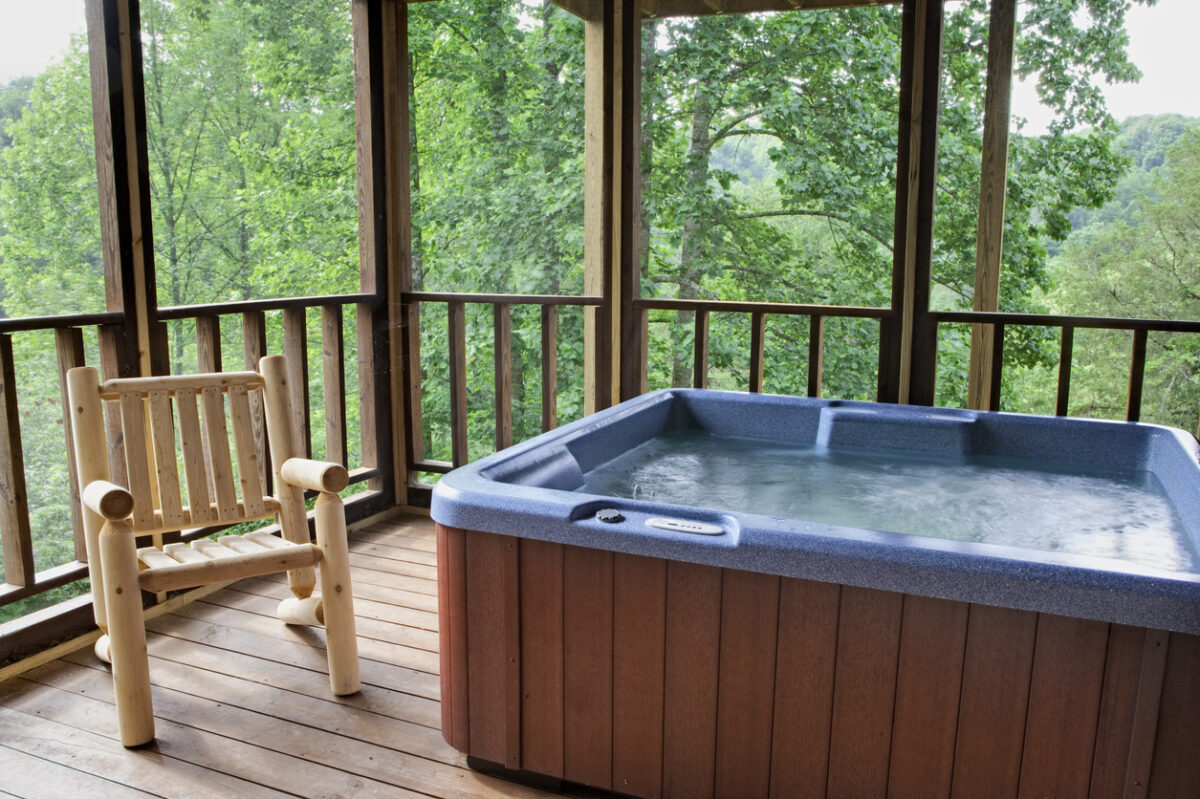We may earn revenue from the products available on this page and participate in affiliate programs. Learn More ›
Installing a hot tub on a deck can certainly kick your outdoor living space up a notch. Adding this oasis for relaxation can make your deck a comfortable, useful spot whether the weather is warm or cold. But before you head to a hot tub retailer or start shopping online, you’ll first want to assess your deck.
You first need to make sure your deck is in good shape and able to handle the weight of this new addition, determine what type of electrical outlet you’ll need, and assess how a hot tub’s placement could affect the flow of your outdoor living space.
Ahead, learn more about these and other factors you should consider before pulling the trigger on a new hot tub for your deck.
RELATED: 11 of Today’s Best Hot Tub Brands
1. How much does the hot tub weigh?
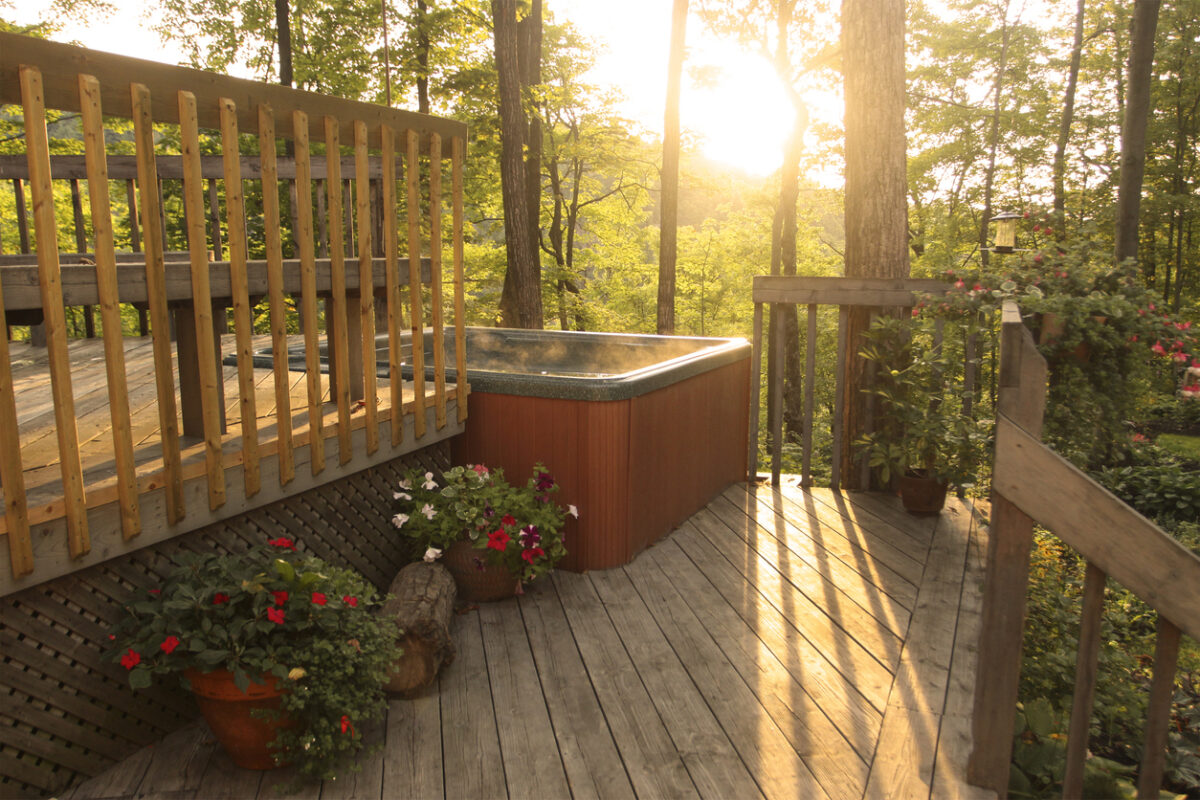
A large spa or hot tub can weigh more than 3 tons when it’s filled with water, which is heavier than most cars and trucks. Decks built to meet the standards of DCA 6 (aka the deck-building bible) are rated to handle 50 pounds per square foot. You can determine if your deck will be able to support the weight of your desired hot tub by making a quick calculation.
Divide the weight of the hot tub (including the water and maximum number of occupants) by its total square footage. If the number is below 50, the deck should be able to hold it. While this method is useful for giving you a rough idea of a deck’s potential weight capacity, it’s always a good idea to have it assessed by a professional, as not all decks are built to code and many older decks could benefit from some structural enhancements.
2. What size of hot tub is best for my deck?
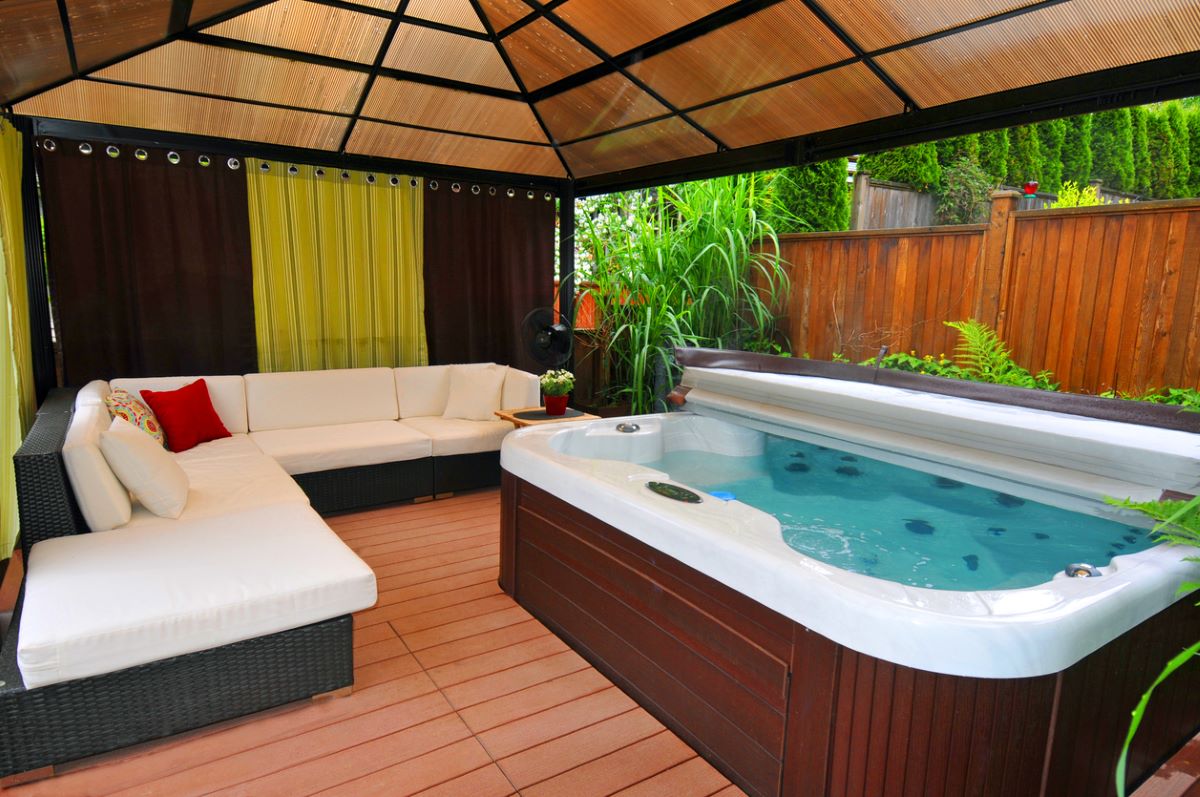
While a spa or hot tub may be a welcome addition to your outdoor living space, installing one requires sacrificing a good chunk of your deck space. Before purchasing a hot tub, plan for its size. Using the dimensions of the hot tub you’re considering, create a cardboard representation to test out where you might place the tub, or use painter’s tape to mark out a space on the deck.
Pay attention to how the hot tub will affect the flow of traffic on the deck, house and deck entrances, and if it will allow space for other deck furniture.
RELATED: The Dos and Don’ts of Sealing the Deck
3. Does the age of the deck matter?

The structural integrity of a deck changes as it weathers and ages, which can impact its ability to hold the weight of a hot tub or spa. Rotting joists or damaged decking are often not strong enough to support the weight of a hot tub.
With this in mind, it’s crucial to have a professional inspect the condition of the decking, joists, hangers, bolts, and screws to make sure they are in good enough condition to hold the added burden of a hot tub and make any repairs and structural additions if needed.
4. What types of utility access are needed?

When planning the location of a hot tub, determine how you will power the hot tub so that you aren’t tempted to snake cords dangerously across the deck. A hot tub needs an electrical outlet to power its heating element and pump, with most models requiring a 240V electrical hookup. It also needs access to a water source to fill it, so consider the proximity of a spigot that will allow you to run a hose to the tub to fill it or periodically top it off.
If neither of these are already installed and accessible to the location you plan to place the hot tub, then the cost and time needed to install them must be factored into the overall project.
5. How much will it cost?
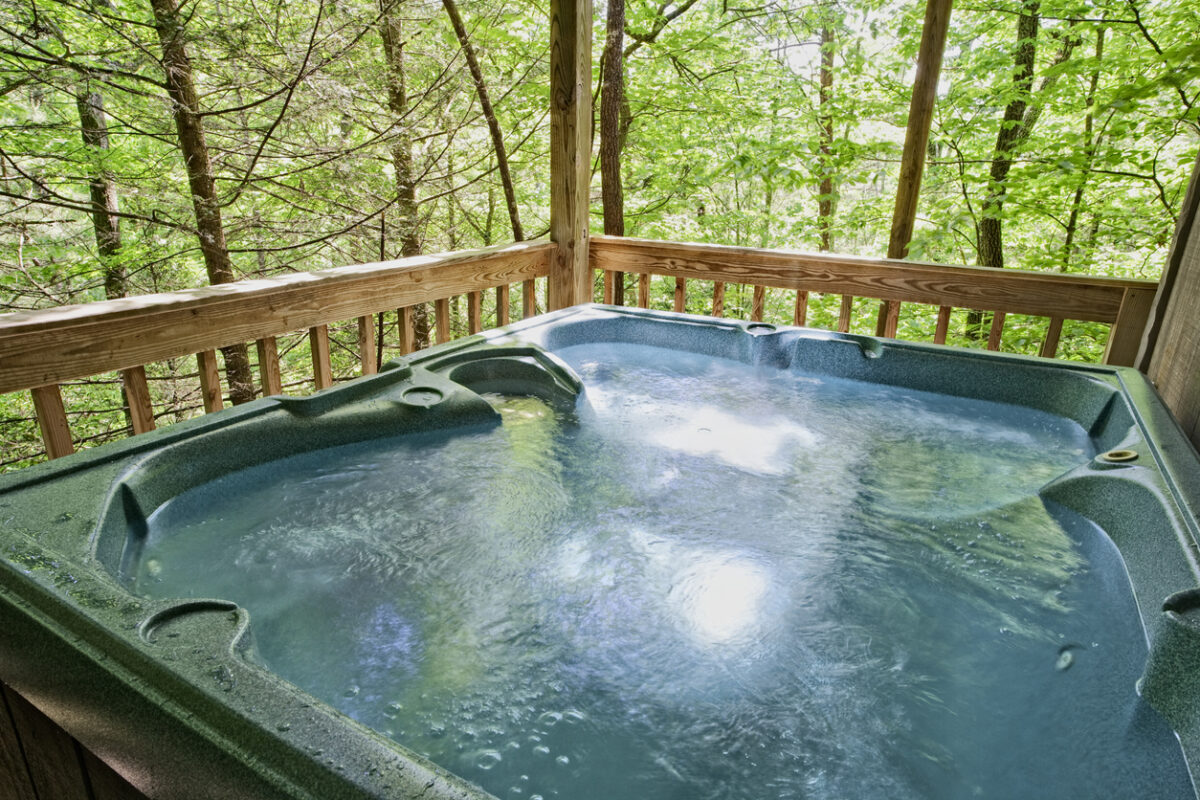
When most people begin researching the cost of putting a hot tub on their deck, they typically only look at the cost of the hot tub or spa itself. There are often other costs associated with the addition of a new hot tub, however.
Your deck may need maintenance or the addition of footings and supports in order to carry the weight of the hot tub. You also may need to extend wiring outside to the deck to power the hot tub, which requires hiring an electrician.
These repairs and upgrades could add significantly to the overall cost of the project. As such, assessing the structural integrity and utility needs of the deck during the planning process is crucial to avoid surprise expenses.
6. What about delivery and installation?
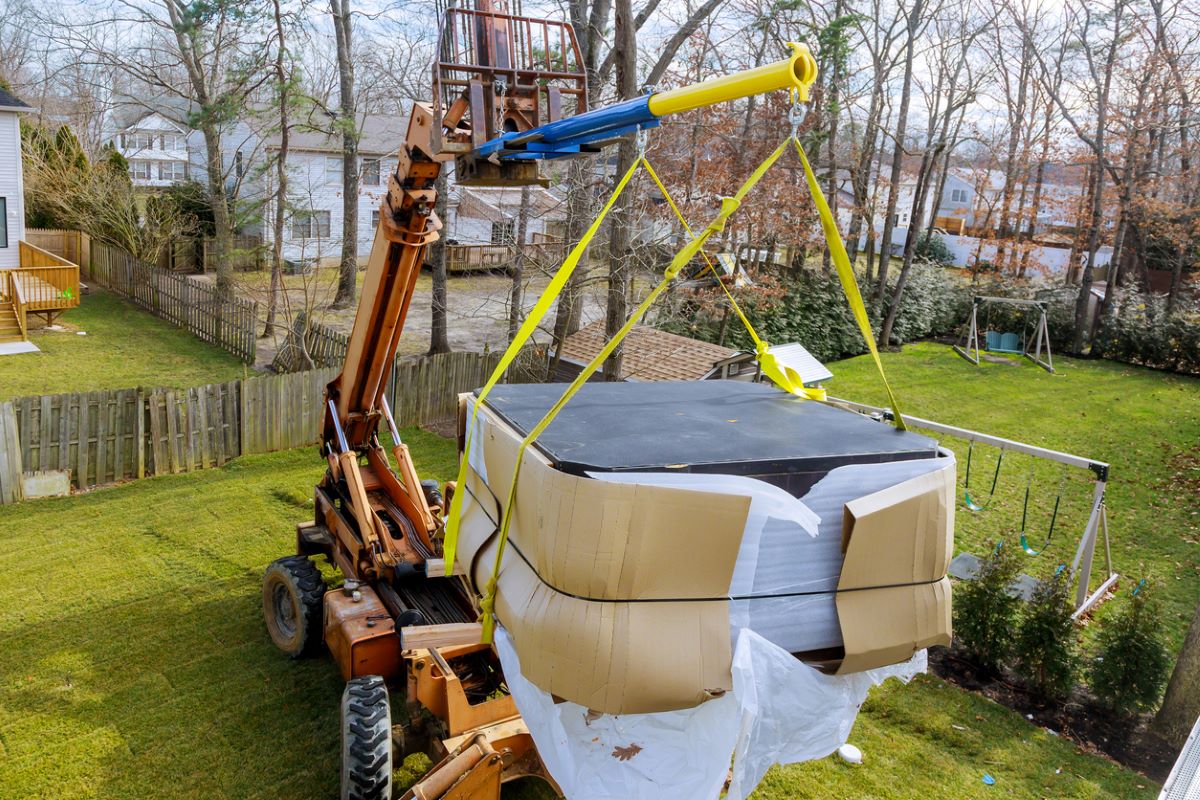
While the hot tub company should be responsible for moving the hot tub onto the deck, you’ll still need to check with the company about their delivery policies and plan some of the logistics of the installation.
The delivery may require the use of a ramp or crane to move the hot tub from the delivery vehicle onto the deck. Make sure there is enough room to allow access to your deck to perform the installation.
RELATED: How to Move a Hot Tub
7. How do you prep the deck surface?
The addition of a hot tub on your deck means you’ll have more people walking around on the surface without shoes on. If the decking is old, it may have splinters and raised screw or nail heads that present hazards for the barefooted.
Before adding a hot tub, consider repairing nicks, splinters, and raised screws in the decking. It may also be a good time to refinish the wood with a fresh coat of deck stain to protect it from water that splashes out of the spa.
8. When should I consider a recessed hot tub?

If you’re concerned about your elevated deck’s ability to support a hot tub or don’t like the look of a hot tub sitting on top of a deck, then consider the idea of installing a recessed hot tub. With this type of installation, the hot tub surface sits nearly flush to the deck, giving it an in-ground look.
Instead of the deck providing support, a small mini-deck with its own footings or concrete pad is custom-built underneath the deck to support the hot tub. Also, if the hot tub doesn’t come with a lockable cover, the International Residential Code stipulates that barriers for entry must be put in place.

